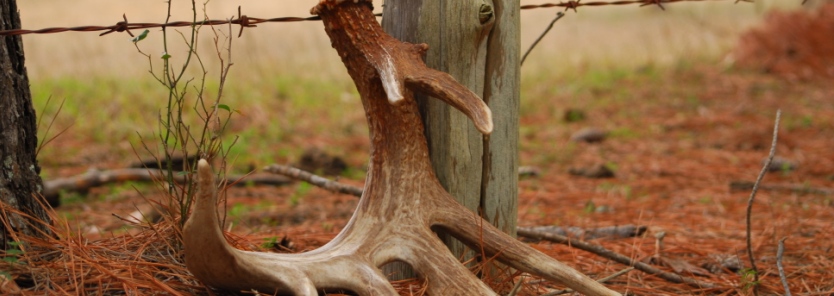Hunting for shed antlers is an ever-growing sport and there are numerous reasons why. If you don’t think it can be exciting you’ve probably never given it a serious try. Shed hunting has become so popular that guided week-long “shed hunts” in prime areas can cost $2,500 or more with food and lodging included. Fear not; however, sheds can be found for free in your own hunting area or on public land.
There are numerous reasons why shed hunting is so popular. In a way it “extends your hunting season,” it’s good exercise and a way to take a jab at “cabin fever,” it’s a great family participation activity, it provides you with information to aid in herd management decisions, and possibly most importantly, it can be a great way to learn something to help you get closer to a mature buck the following hunting season. Not to mention that big sheds can bring in big buck$…pun intended.
While deer may shed both of their antlers within seconds of one another in the same spot, don’t expect it to happen often –you may need to search a wide area to find a matching set. Following are some prime places to begin your search for sheds.
- Common sense should tell us to begin searching in areas where we’ve seen animals during the most recent weeks prior. A spot may not seem logical to you, but if whitetails find one or more of their needs they may utilize the location anyhow. Sometimes it can be that easy.
- Food plots of brassicas like those in Deer Radish, Winter Bulbs & Sugar Beets or Maximum, or other winter favorites like corn or sorghum can be great spots to come across sheds. You want to find them before they puncture your tractor tires a few weeks later.
- Check fence crossings or wherever a buck may have to jump. Oftentimes when they land an antler is jarred loose.
- South facing slopes and benches. South facing slopes receive the most sunlight throughout the course of the day thus making it warmer and more attractive to deer. The extra sunlight also helps to produce maximum stem density which means both, added food and cover.
- Heavy cover adjacent to leftover agricultural crops is another sure bet zone for cast-off headgear.
- Freshly logged areas with a newly accessible browse source will be a magnet to whitetails and a prime spot to find sheds.
- Swamps with thick stands of conifer trees that absorb warmth from the sun, providing thermal cover, make for excellent wintering areas and great places to discover antlers. These areas will also have major browse sources from poplar, dogwood, sumac, white cedar, greenbrier, wild grapes, honeysuckle, wild rose, American beech or twigs and buds from other various trees and shrubs somewhere nearby.







